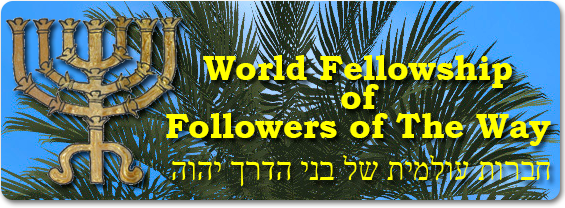Tonight, being the start of the Fourth-month, we begin the 3-day countdown to Theophany Day (9th-10th July 2024). Theophany Day is when we celebrate and remember the manifestation of God’s Glory on Mt Horeb in the presence of all the Israelites, and the Giving of the Torah to Israel.
Torah allows community festivals outside of the ordained festivals, as ‘Days of Joy’ (Num 10:10). This is how Hanukkah is permitted by Torah, not as an ordained biblical festival, but as a community festival. There are biblical clues that Theophany Day might also have been such a recognised ‘Day of Joy’, at the time when the Torah received its final edit.
Just as we are told to observe Passover every year, so that we might remember the Exodus as if we had lived through it ourselves, so too there is a commandment to actively recall the Manifestation of God’s Glory on Mt Horeb, and the Giving of Torah, as if we had experienced it ourselves:
“Only take the utmost care and observe due diligence all the days of your life, in case you forget the things which you have seen with your own eyes, and they fade away from your memory; rather, make them known to your children and to your grandchildren – the day when you stood before YHVH your God at Horeb …” (Dt 4:9-10a). It then goes on to describe the entire experience of the Theophany.
When the Torah received its final edit in the 6th century BCE, the chapters were so arranged that, around every festival and holy day, the portions deliberately reflected the themes of each festival. The assigned weekly portion either explicitly mentioned the relevant festival, or they implicitly contained the main themes of the festival or holy day.
The Torah was originally designed to specifically be read in a three-year cycle, which is why the Massorite Talmidi community preserves this 3-year cycle (it is the one that Yeshua and his earliest followers would have known). This pattern of themes is only apparent when you read Torah in the way it was originally designed to be read. When you therefore look at the Torah portions designed to be read before or after Theophany Day, they seem to have the common themes of encountering God’s Presence, and direct communion with God.
The three Torah portions around Theophany Day are:
1st year: Gen 17:1-27 (Abraham circumcises the men in his family)
2nd year: Ex 30:1-11 (The Altar of Incense)
3rd year: Num 23:2 – 25:09 (Balaam encounters God, and receives 4 oracles from God)
At first, the three portions do not seem to be at all connected, but if you go into the lore and ancient culture behind each of them, they absolutely are.
Regarding the Torah portion for the 1st year: In Jewish culture, it is believed that when a child or an adult is circumcised, the gates of heaven are opened, and anyone present can pray directly to God, and God will hear.
Regarding the Torah portion for the 2nd year: the Altar of Incense was kept directly in front of the Ark, where the gateway to God’s Glory was supposed to open up (Ex 25:22). During the Temple services, every morning and every evening, the incense service was considered the most holiest part of the entire repertoire of Temple services. This was because it was believed that the gates of heaven would open up between heaven and earth during the incense service. The incense service was very well attended in ancient times, more so than any other service, because of this reason.
Regarding the Torah portion for the 3rd year: before Balaam received his four oracles from God, the text reads,
“Perhaps Adonai will come to meet with me. Whatever God reveals to me I will tell you.” Then he went off to a barren height.” (Num 23:3b)
This is the thematic connection in this third-year portion to the manifestation of God’s Glory on Mt Horeb, and to Moses ascending Mt Horeb. In this way, all three Torah portions which are read around the time of Theophany Day, have this theme of a special encounter with God’s Presence, and of solemn, direct communion with God.
For this reason, although Theophany Day is not an ordained commemoration, it is possible that it was already a recognised ‘Day of Joy’ at the time when the Torah received its final edit in the 6th century BCE. The core themes of the Torah portions which are read around Theophany Day are highly suggestive of it.
Ex 19:1 & 19:11 give us the exact date of the first Manifestation of God’s Glory, and of the Giving of the Torah: the 3rd day of the Fourth-month (being the third new moon after the Israelites left Egypt). In the Massorite Talmidi community, we will therefore be observing this restored and revived ‘Day of Joy’ (yom simchah) from the sunset of Tuesday 9th July to sunset of Wednesday 10th July 2024.
If you wish to participate in this extraordinary day of piety and devotion, you can purchase the machzor for the day’s service on Amazon:
If you have any questions about Theophany Day, or any other matter, you can email me at:
shmuliq.parzal@googlemail.com
blessings and peace to you all, in the Name of YHVH our Saviour and Redeemer
your brother
Shmuliq
